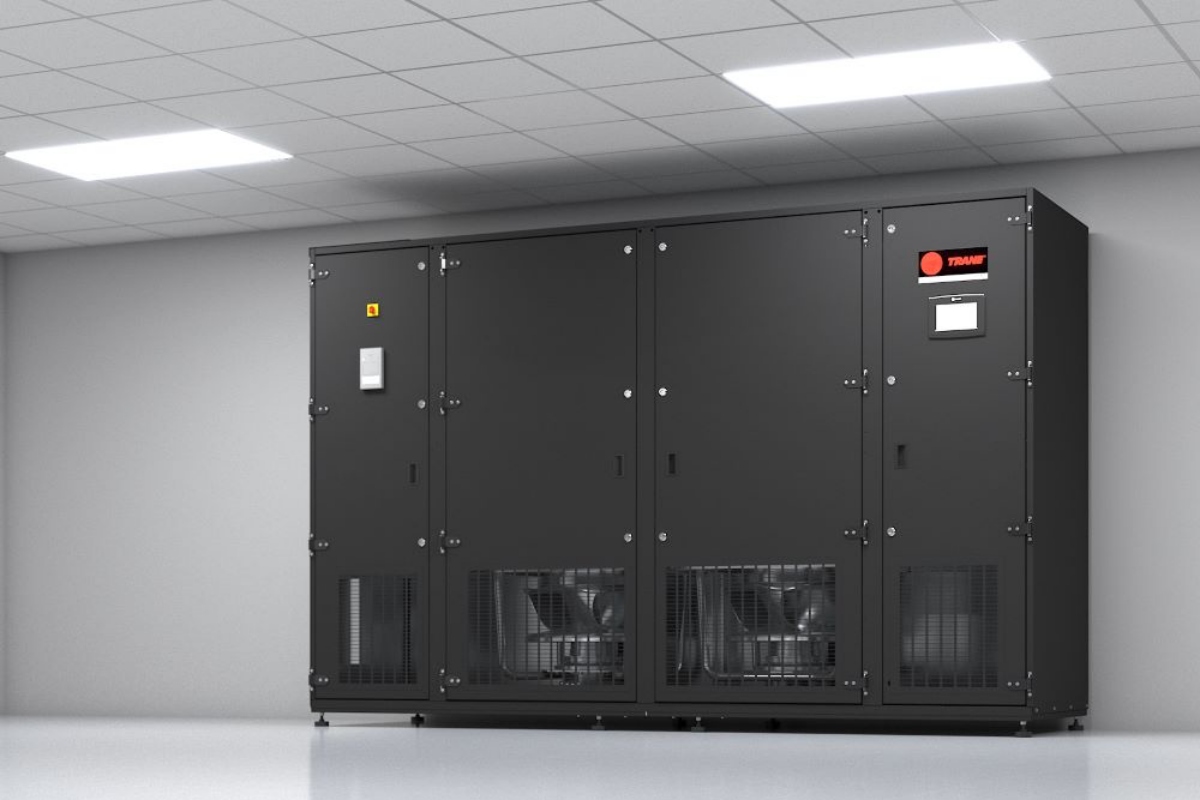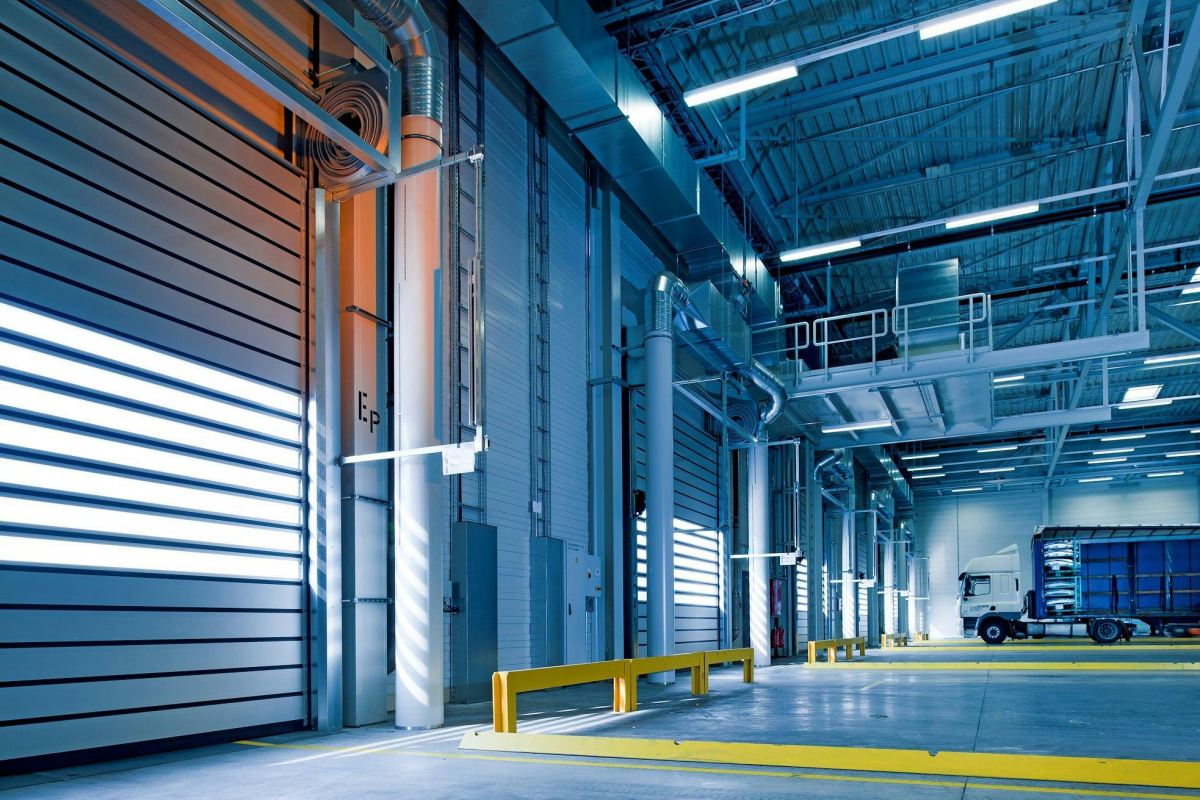Data Centre Infrastructure News & Trends
Data Centre Infrastructure News & Trends
Enterprise Network Infrastructure: Design, Performance & Security
News
Gateway Fiber deploys Perle IOLAN Console Servers
Gateway Fiber, an internet service provider (ISP) serving communities in Missouri, Minnesota, Massachusetts, and North Dakota, USA, has strengthened its remote management capabilities by deploying Perle IOLAN Console Servers across its network.
The company operates micro data centres, also known as points of presence (PoP) sites, which are essential for delivering high-speed internet.
The IOLAN Console Servers provide out-of-band access, enabling administrators to remotely manage and troubleshoot equipment. This aims to reduce downtime and allow rapid response to service issues.
According to Jeff Shilt, Senior Network Engineer at Gateway Fiber, the team had considered Cisco terminal servers with LTE routers but found the approach too costly. The IOLAN units, with integrated cellular connectivity, reportedly offered a more affordable option.
“The IOLAN Console Server gives the ultimate back door connectivity,” says Jeff. “When we’ve had a fibre cut or we lose access, we come in via the LTE and use the serial console ports to get into our equipment.”
The devices also support maintenance and upgrades. “When we must do firmware updates, we can access the equipment via an LTE interface, as if we were physically there. This makes the process easier and safer,” Jeff explains.
They also allow engineers to guide field technicians remotely during hardware changes, intending to reduce travel requirements and associated costs.
Gateway Fiber continues to expand its fibre-to-the-home network to meet growing data demands. “Any new cabinet we build is going to have an IOLAN in it for out-of-band access, and they’re awesome for that. I mean, they’re just perfect,” continues Jeff.
John Feeney, Chief Operating Officer at Perle Systems, comments, “We are thrilled to support Gateway Fiber in [its] mission to provide reliable, high-speed internet to underserved communities.
"Our IOLAN Console Servers are designed to offer robust and secure remote access, ensuring that Gateway Fiber can maintain their high standards of service and quickly address any network issues.”
Joe Peck - 14 August 2025
Data Centre Infrastructure News & Trends
Enterprise Network Infrastructure: Design, Performance & Security
News
New internet exchange in São Paulo
DE-CIX, an operator of internet exchanges (IXs), has started to operate its peering and interconnection services in São Paulo, Brazil.
The new internet exchange, DE-CIX Sao Paulo, is distributed across three data centres: Equinix SP4, Elea SPO1, and Ascenty SP4. The company is already onboarding the first 20 customers in the region, including TBC Azion Technologies.
With the start of operations, companies now have access to local peering, network interconnection, and remote peering, as well as cloud exchange and multi-cloud routing functionalities.
Customers can gain direct and private access to cloud providers both locally and remotely, allowing cloud-to-cloud communication and facilitating their digital business with, what DE-CIX claims to be, "low-latency and high-performance connectivity."
By joining the exchange, companies can connect directly to thousands of network operators (carriers), internet service providers (ISPs), cloud and content providers, and corporate networks from more than 100 countries worldwide.
"With our high-performance, secure, and scalable interconnection services, we enhance local interconnection, creating a more resilient and globally integrated interconnection ecosystem in São Paulo," claims Ivo Ivanov, CEO of DE-CIX. "Being a part of the global DE-CIX ecosystem offers the potential of an enormous diversity of networks now accessible in the city.
"The growing digital economy in Brazil requires state-of-the-art connectivity, ensuring that data exchange takes place fast, efficiently, and securely, as local as possible and as global as necessary. The new IX opens up a complementary offering that further enriches the country as the second largest market in the world in terms of number of networks."
The new internet exchange is integrated into DE-CIX’s global ecosystem through connections to IXs in New York, Lisbon, Madrid, and Frankfurt (the largest IX in Europe).
The connectivity takes advantage of several transatlantic routes via the Atlantic South-North and South-South connectivity corridors. This will allow connected Brazilian networks to reach thousands of local, regional, and international networks that together form the largest interconnection ecosystem in the world.
Rafael Umann, CEO of Azion, comments, "Azion operates one of the most distributed and advanced infrastructures in the world, with a presence in over 100 data centres. Our platform ensures resilience, security, and performance for critical and AI workloads.
"Through interconnection with DE-CIX, we guarantee our customers access to the best infrastructure on the market and further expand our global network to deliver low latency and high availability to our clients, regardless of user location."
For more from DE-CIX, click here.
Joe Peck - 14 August 2025
Data Centre Infrastructure News & Trends
Enterprise Network Infrastructure: Design, Performance & Security
News
Globalgig ranks on Inc. 5000 for sixth year running
Globalgig, a provider of globally managed communication and connectivity systems, has been named on the Inc. 5000 list of America’s fastest-growing private companies for the sixth year in succession.
The company, which manages communication and connectivity services worldwide, was ranked 3,808, with revenue growth of 99%. It joins a small group of US businesses noted for sustained expansion.
Over the past year, Globalgig has expanded its AI-based network management and security services, aimed at supporting distributed workforces and addressing cyber threats. Its updated managed security offering provides organisations with adaptive, data-led networks.
The past three years have seen the company widen its service portfolio, improve operational efficiency, and recruit additional staff. A key development has been the launch of Orchestra, an AI platform designed for inventory management and reporting across all services.
Orchestra Insight, the analytics engine within the platform, delivers real-time network intelligence across IT systems. Features include contextual monitoring, automation tools, and configurable dashboards, giving a single view of network performance, security status, and risk across legacy and newer devices, cloud services, and security tools.
“This recognition reflects our team’s strong commitment to solving today’s challenges while helping enterprises prepare for the future,” says Ernest Cunningham, CEO of Globalgig.
“At Globalgig, we focus on delivering outcomes that empower organisations to grow, adapt, and succeed. As technologies like agentic AI continue to reshape the business landscape, we are helping our clients build the capabilities they need to stay ahead.
"This includes unifying legacy and modern networks, and providing real-time visibility across devices, clouds, and applications.”
Joe Peck - 13 August 2025
Data Centre Infrastructure News & Trends
Enterprise Network Infrastructure: Design, Performance & Security
News
Scalable Network Attached Solutions for Modern Infrastructure
GNM completes 400G infrastructure upgrade in Sofia
GNM (Global Network Management), a backbone internet provider and telecom operator, has completed the modernisation of its point of presence in Sofia, Bulgaria, deploying the Arista 7800R3 - a modular, carrier-grade platform with native 400G capability.
The upgrade is part of GNM’s ongoing strategy to strengthen its optical backbone and meet increasing interconnection demands across south-eastern Europe.
The Sofia node now plays a key role in supporting high-throughput transit traffic from the Balkans, Turkey, the Middle East, and the Caucasus.
With two fully independent DWDM paths - routed via Belgrade and a diverse route through Romania - the site has been engineered to provide path diversity, automated failover, and consistent low-latency performance.
It is fully integrated into GNM’s meshed DWDM backbone, which provides onward connectivity to major European hubs including Bratislava, Frankfurt, Amsterdam, Vienna, Prague, Warsaw, and Stockholm.
The node also offers access to a full range of services, including high-capacity 100G and 400G DWDM transport, direct and remote access to GNM-IX, IP Transit with BGP community-based policy control, and Layer 2 services backed by strict service-level guarantees.
“The Sofia upgrade is an important step in the ongoing development of GNM’s core infrastructure in the region," comments Alex Surkov, Head of Development at GNM.
"One of the first customers to use the new platform was a European network operator that provisioned a 100G DWDM service over both available paths, along with a GNM-IX peering connection.
"The deployment delivered a measurable reduction in latency to Frankfurt, around 18%, and significantly improved recovery times during incidents. It’s a clear example of how infrastructure investment directly enhances service performance for our clients.”
Joe Peck - 12 August 2025
Data Centre Infrastructure News & Trends
Data Centres
Innovations in Data Center Power and Cooling Solutions
Products
Trane adds CRAH units to DC cooling portfolio
Trane, an American manufacturer of heating, ventilation, and air conditioning (HVAC) systems, has expanded its data centre thermal management range with the addition of a Computer Room Air Handler (CRAH) system.
The unit is designed to maintain airflow and temperature conditions for servers and other electronic equipment, aiming to support operational uptime while reducing energy use.
The CRAH system is equipped with Trane’s Symbio controller, which provides a broad capacity range and customisable configurations.
The controller enables leader designation and dynamic reassignment for up to 32 units, allowing continuous operation and access to digital tools for lifecycle management.
According to Trane, the new airside system is intended for both colocation and hyperscale data centre operators seeking flexible integration into existing or new-build facilities.
Steve Obstein, Vice President and General Manager, Data Centres, Trane Technologies, says, “Expansion of our airside offer gives our colo and hyperscale customers greater flexibility for configuring custom systems and addresses the growing trend toward a single-source solutions provider.”
Integration and lifecycle support
The CRAH addition is part of Trane’s wider approach to unifying and integrating thermal management systems through smart controls.
The company offers local service teams across North America and remote monitoring capabilities for predictive maintenance and operational oversight.
Recent updates to Trane’s thermal management portfolio include:
• Scalable liquid cooling platforms• A fan coil wall platform• Larger capacity and higher ambient temperature air-cooled chillers
The CRAH system has been developed to operate alongside these technologies as part of a consolidated data centre cooling strategy, with the aim of improving efficiency, reliability, and sustainability.
For more from Trane, click here.
Joe Peck - 12 August 2025
Data Centre Infrastructure News & Trends
Data Centres
Innovations in Data Center Power and Cooling Solutions
BSRIA first UKAS-accredited provider for BTS 4/2024
BSRIA, a consultancy and testing organisation, has become the first organisation to receive UKAS accreditation in accordance with BTS 4/2024 for airtightness testing of Raised Access Plenum Floors (RAPFs), following a successful ISO 17025 audit earlier in 2024.
The accreditation formally extends BSRIA’s scope of approved activities and introduces an industry-recognised methodology for testing RAPFs, which play a key role in airflow management in data centres.
Chris Knights, BSRIA Building Performance Evaluation Business Manager and lead author of BTS 4/2024, comments, “The UKAS accreditation ensures we continue to provide independent testing to the highest standards of quality, repeatability, and traceability.
"This is a significant advancement, enabling the industry to adopt a dedicated standard that supports higher-performing building services for owners and operators.”
BTS 4/2024 standard
The accreditation follows the introduction of BTS 4/2024 Airtightness Testing of Raised Access Plenum Floors, which sets out a methodology for measuring RAPF air leakage.
The standard is designed to support efficient airflow management by ensuring conditioned air in underfloor voids is directed to the intended occupied areas rather than escaping through cavities, risers, stairwells, or other adjacent spaces.
RAPFs are widely used in modern construction, particularly in data centres, where optimised airflow is important for both cooling performance and energy efficiency.
BTS 4/2024 supersedes previous guidance, BG 65/2016 Floor Plenum Airtightness – Guidance and Testing Methodology, and incorporates clearer guidance and refined testing processes developed in response to industry feedback.
Chris continues, “An effectively constructed and sealed raised access plenum floor is essential for achieving the air distribution performance intended during the design phase.
"The methodology in BTS 4/2024 provides clear criteria and a step-by-step process for verifying as-built performance.
"With increasing demand for high-performing environments such as data centres, specifying BTS 4/2024 supports effective air distribution and helps ensure RAPFs deliver on design intent.”
Joe Peck - 11 August 2025
Data Centre Build News & Insights
Data Centre Infrastructure News & Trends
Data Centre Projects: Infrastructure Builds, Innovations & Updates
Innovations in Data Center Power and Cooling Solutions
Joule, Caterpillar, Wheeler to power Utah DC
Joule Capital Partners, an infrastructure company, Caterpillar, a manufacturer of construction equipment, and Wheeler Machinery, a dealer of heavy construction equipment, have jointly announced an agreement to power Joule’s High Performance Compute Data Center Campus in Utah.
Joule says it aims to create the largest single campus in Utah.
Bringing multiple gigawatts of capacity to Utah
This initiative will provide four gigawatts of total energy to the centre of the Intermountain West.
The project will deliver prime power and integrated combined cooling heat and power (CCHP) systems with a by-design liquid cooling architecture.
Powered by a fleet of Caterpillar’s latest G3520K generator sets and support equipment, the distributed generation system produces electricity and captures waste heat to power and cool high-density server systems.
The provision includes 1.1 gigawatt hours of grid forming battery energy storage along with backup power generation served by diverse fuel sources.
Due to Caterpillar’s US-based manufacturing footprint, the full generation package should be able to be delivered ahead of other generation technologies. This speed-to-power advantage could be critical for meeting the growth in demand for compute capacity.
Beyond the gensets, this integrated system includes the controls, switchgear, inverters, energy storage, and CCHP, providing a total power provision for the Joule data centre.
Caterpillar and Wheeler will also provide service and support for the products and systems, aiming to ensure uptime and availability targets are met.
Comments
“This project represents the core of Joule’s mission: to deliver artificial-intelligence-(AI)-ready compute capacity by pairing world-class data centre campuses with reliable, on-demand power,” says David Gray, President of Joule Capital Partners.
“By combining Caterpillar’s advanced energy systems with Wheeler’s local expertise, we can bring gigawatt-scale capacity to market faster and more efficiently than ever before, ensuring our tenants have the power and reliability they need to thrive in the next generation of high-performance computing.”
Melissa Busen, Senior Vice President of Electric Power at Caterpillar, adds, “Caterpillar is uniquely positioned to tackle the growing energy needs for artificial intelligence and the evolving needs of modern infrastructure.
"This project is a perfect example of how we can deliver fast, reliable power generation to our customers through integrated energy solutions. We are proud to work with Joule and Wheeler to help bring this project to life.”
Bryan Campbell, CEO of Wheeler Machinery, claims, “This strategic alliance between Joule, Caterpillar, and Wheeler brings together world-class engineering, local expertise, and visionary energy design.
“We’re proud to help deliver a resilient solution ready to meet future compute demands and set a new standard for data centre infrastructure.”
Joe Peck - 8 August 2025
Data Centre Infrastructure News & Trends
Enterprise Network Infrastructure: Design, Performance & Security
Products
Comnet releases 720W industrial PoE switch
Comnet, a manufacturer of mission-critical industrial networking systems, has just announced the release of an "ultra-resilient," high-power PoE switch.
As the first in Comnet’s new line of IEEE802.3bt-compliant ethernet switches, the CNGE10FX2TX8MSBT switch has been designed to power next-generation devices in extreme environments.
With 8 RJ45 ports delivering 90W simultaneously and a total PoE budget of 720W, plus 2 SFP ports supporting up to 2.5 Gbps, the new system has been engineered for high-capacity, high-performance applications like advanced IP cameras, edge sensors, digital signage, and intelligence-driven systems.
The switch’s power architecture allows users to install a smaller power supply today and scale up later, aiming to eliminate the need for costly hardware replacements as demands grow.
Built for resilience and bandwidth intensive applications, the switch maintains full power output across a -40°C to +70°C temperature range, while ruggedised housing and redundant power inputs intend to ensure maximum uptime.
It is designed for mission-critical sectors, including transportation, security, energy, and manufacturing, and features Comnet’s Port Guardian technology, which automatically locks down ports in case of tampering to guard against unauthorised access.
“We are proud to introduce our latest product innovation, designed and built in the United States, for harsh environments with high bandwidth and high-power requirements,” says Sergio Resendiz, President, Comnet.
“We built this new switch to deliver full 90W power on every port, even in harsh conditions.
"Whether you need that level of power today or are planning for tomorrow, the new switch provides the flexibility to scale without compromising reliability or security. It’s built to keep your network connected, no matter the circumstances.”
Designed, manufactured, and supported in the United States, the switch meets BABA, NDAA, and TAA compliance standards.
Joe Peck - 7 August 2025
Data Centre Infrastructure News & Trends
Enterprise Network Infrastructure: Design, Performance & Security
News
BIGLOBE selects DE-CIX for faster European connectivity
Japanese internet service provider (ISP) BIGLOBE is now connected to internet exchange (IX) operator DE-CIX Frankfurt via GlobePEER Remote.
The direct connection to one of the world’s largest internet exchanges seeks to enhance latency and network performance for BIGLOBE’s customers – especially for data exchange with European eyeball networks.
As one of Japan’s largest ISPs, BIGLOBE is using the remote peering service from the IX operator to optimise its intercontinental data flows. The Tier 2 ISP connects through its existing access point in Tokyo.
Peering at DE-CIX Frankfurt: Controlling data flows and minimising latency
“Remote peering enables ISPs across the globe to connect to DE-CIX internet exchanges independent of their physical location,” says Frank P. Orlowski, Executive Vice President Corporate Development at DE-CIX.
“This allows for more efficient control of data flows, reduced latency, and significantly improved network stability.”
Yuichi Minami, Executive Officer / CNO at BIGLOBE, adds, “By directly connecting to European eyeball and content networks, we shorten data paths and improve service quality – especially for streaming and cloud-based applications.
"At the same time, we reduce costs and boost the resilience of our network.”
Internet and network services for Japan
With nearly 1100 connected networks and an annual data volume of around 45 exabytes (as of 2024), DE-CIX Frankfurt is one of the largest internet exchanges in the world.
GlobePEER Remote allows customers at one DE-CIX location to access other internet exchanges within the global DE-CIX ecosystem – including Singapore, New York, Madrid, Dubai, and Frankfurt – without needing additional on-site infrastructure.
Headquartered in Tokyo, BIGLOBE provides internet access and network services, as well as content and applications for both private and business users. The new peering connection is part of the company’s international expansion strategy.
In its 30th anniversary year, DE-CIX is accessible from data centres in more than 600 cities worldwide.
For more from DE-CIX, click here.
Joe Peck - 6 August 2025
Data Centre Infrastructure News & Trends
Enterprise Network Infrastructure: Design, Performance & Security
News
Products
Riverbed launches new network observability tools
Riverbed, a US-based provider of network performance monitoring, application management, and WAN optimisation software and hardware, has launched a new range of AI-powered network observability tools, aimed at helping enterprise IT teams manage increasingly complex environments.
The latest updates include new hardware, enhanced software, and a more flexible licensing model, designed to support high-performance, AI-ready infrastructure.
The new release features the Riverbed xx90 appliance family, reportedly delivering up to three times the performance of previous systems for AppResponse, NetProfiler, and Flow Gateway.
The appliances are built for high-throughput packet and flow capture across distributed networks, supporting monitoring at over 50Gbps and offering scalable storage beyond 2.4PB.
AppResponse 11.21 now enables real-time analysis of encrypted IPSec ESP tunnel traffic and cipher hygiene, while the new version of NetProfiler (10.29), according to the company, brings faster reporting, dynamic flow balancing, and support for Versa SD-WAN.
The release also introduces the Riverbed Intelligent Network Observability Essentials bundle, combining key tools for hybrid environments:
• Riverbed IQ – AI-powered diagnostics for issue detection and resolution
• Workspaces – Role-based dashboards integrating packet, flow, and endpoint data
• Grafana plug-in – Allows Riverbed data to be displayed in existing Grafana dashboards
• Topology Viewer – Map-based visualisation of networks, applications, and user experience
These features are available through the company's Riverbed Flex Subscription. The model, they claim, is intended to improve licensing flexibility, reduce total cost of ownership, and simplify long-term planning.
“With today’s launch, we’re introducing next-generation observability systems that align with what our customers need: streamlined toolsets, automation, and cost-efficient performance,” says Dave Donatelli, CEO of Riverbed.
“We’re delivering these capabilities with faster appliances, smarter software, and greater flexibility.”
Riverbed reports 92% year-on-year growth in observability bookings for the first half of 2025.
“As organisations prepare their infrastructure for AI and data-heavy applications, they need monitoring systems that are intelligent and built to scale,” adds Shamus McGillicuddy, Research Vice President at EMA.
Joe Peck - 5 August 2025

Head office & Accounts:
Suite 14, 6-8 Revenge Road, Lordswood
Kent ME5 8UD
T: +44 (0)1634 673163
F: +44 (0)1634 673173









